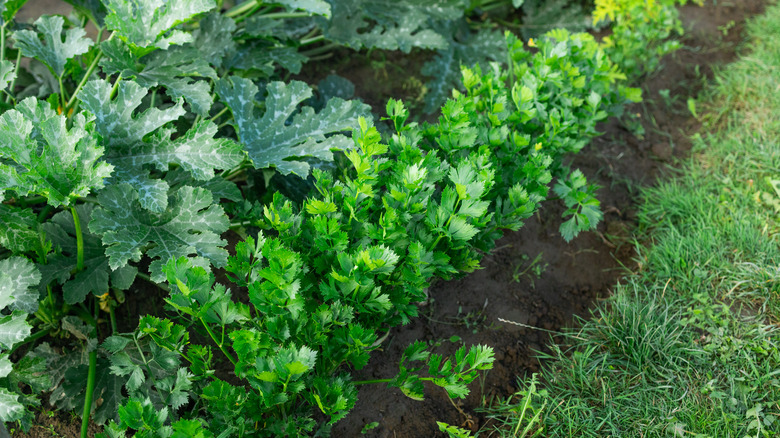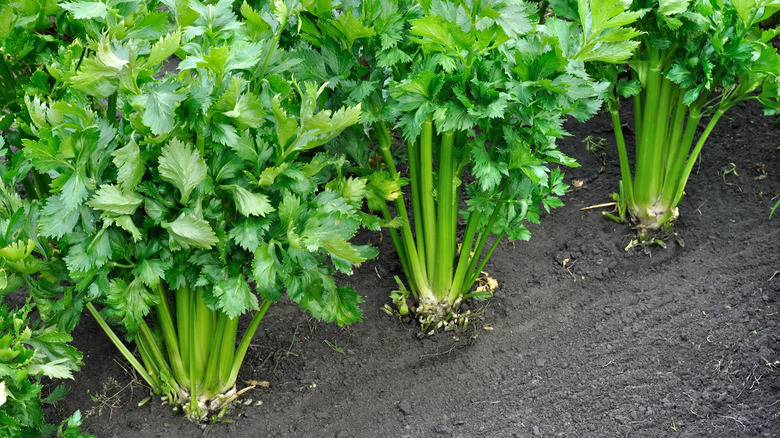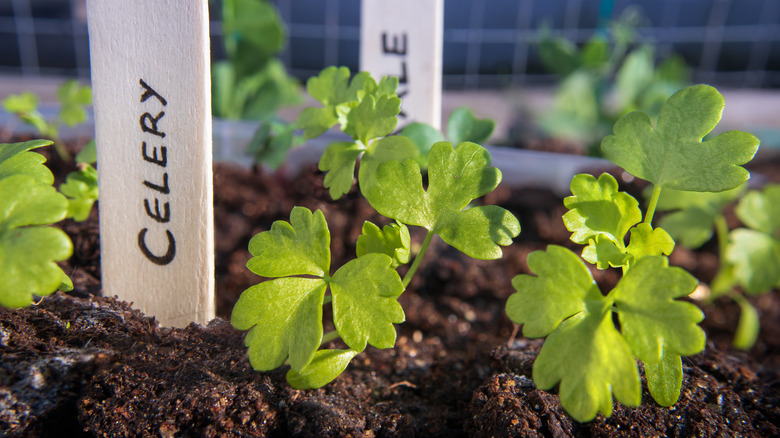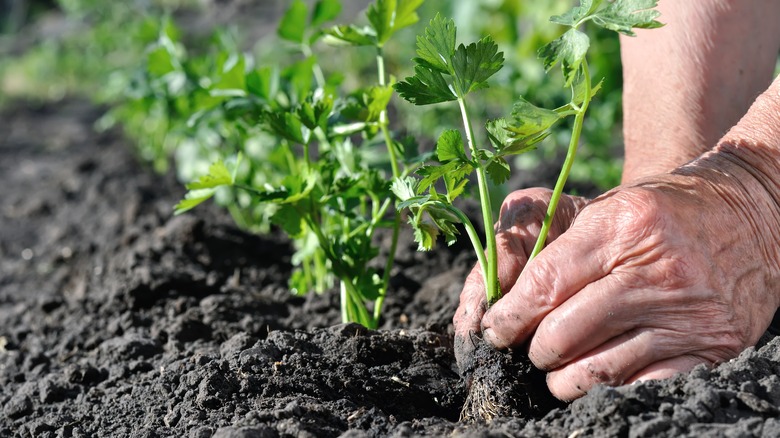Growing This Popular Veggie In Your Garden Is No Easy Feat - Here's Why
Whether you're a gardener who loves to turn your harvest into a gourmet meal or you just want to grow your own ingredient for ants on a log, celery seeds may be on your shopping list. This versatile veggie adds flavor to so many meals that it makes sense to grow it yourself. While many consider celery a necessary ingredient in a well-stocked kitchen, it is difficult to grow unless you can maintain the right environmental conditions.
The celery grown in U.S. home gardens and what you find in the supermarket is a cultivated version of wild species found throughout cool, wet regions in Europe and Asia. What was originally used for medicinal properties has been developed into the large stalks of celery that we recognize today. If you're considering growing celery in your garden, you should know that it will not be exactly like what you will find at the supermarket. Homegrown celery is more flavorful and leafier than the thick stalks available commercially. Here's how to ensure a successful and flavorful celery harvest.
Growing requirements
It may be versatile in the kitchen, but celery is finicky in the garden. The first challenge is that you must live in a place that has a long, cool growing season when the soil will stay consistently moist. This can be during the spring or fall, but most varieties take around 140 days to reach maturity. That means you'll need to live in a place where you can provide these environmental conditions for almost five months. Celery will grow best between 60 and 70 degrees Fahrenheit, and while it doesn't like hot weather, it is also damaged or killed when temperatures drop below freezing. In some regions, celery's requirements can be met by using some gardening tricks like frost cloth and starting seeds indoors.
If you are not sure if you can grow celery in your area, one way to determine if it's possible is to check with the local growers at your nearest farmers market. Farmers and gardeners are usually generous with information about their products. Ask them how and where they grow their celery and if they have any tips for you. Another excellent source for all kinds of gardening information is your county's extension service.
Growing celery in different regions
For those willing to take on the challenges and — hopefully — rewards of growing celery, start by deciding if your local weather conditions would be best in the spring or fall. Remember, you'll need almost five months of temperate days without freezing temperatures. In northern regions, you can start seeds indoors up to 10 weeks before your last expected frost date. That will cut over two months off your outdoor growing time! Be prepared to protect your seedlings from late frost.
Celery may grow best as a fall crop in southern regions. Start your seeds indoors while it's still hot, about 10 weeks before average high temperatures are below 80 degrees. Have a watering plan in place to keep the soil consistently moist to keep your seedlings healthy.
We don't want to be doom and gloom for those living in central regions of the U.S., but growing celery is particularly difficult because the temperatures in these areas usually move from freezing to hot in a few short months. It is very difficult to grow celery in such conditions, but you could try some of the short-season varieties, like Tango celery. It may or may not work, but experimenting in the garden is always a valuable learning experience.
How to transplant celery to your garden
Now that you've got your timeframe in place for planting celery, and your seedlings are ready to move to the garden, you'll need to harden them off. This process gets them accustomed to outdoor conditions by placing them outside for an increasing amount of time each day. Once they are outside overnight, they are ready to transplant.
Loosen your soil and add about 2 inches of high-quality compost. Place your seedlings about 12 inches apart and water well after planting. To help keep the soil consistently moist, especially in warmer weather, add about 2 inches of mulch around and between your plants. As celery grows, the stalks may start to fan out. You can tie them together or just let them grow naturally — it will not affect the flavor. What may improve the taste of your harvest is blanching. When the plants are 1 foot tall, wrap them with cardboard. As they reach maturity, they tend to get bitter, but this covering will protect them from direct sunlight, providing a more delicate flavor.



